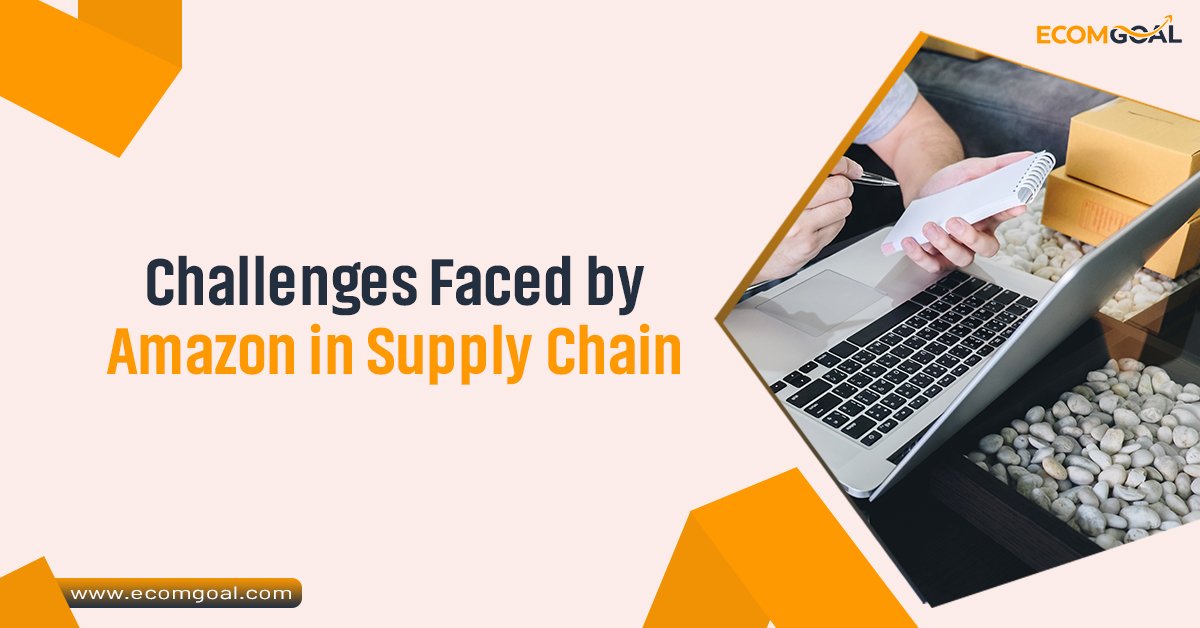
This blog will explore the primary obstacles challenges faced by Amazon in supply chain and how these challenges impact its business.
Step-by-Step Guide Challenges Faced by Amazon in Supply Chain
1. Last-Mile Delivery Challenges
One of the most significant challenges in Amazon’s supply chain is managing last-mile delivery, which refers to the final step in getting a package from a distribution center to the customer’s door. Last-mile delivery is often the most expensive and complicated part of the shipping process.
Key Issues:
- Cost: Delivering individual packages to residential addresses is costly, especially in rural areas where distances are longer, and the density of deliveries is low.
- Traffic and Urban Infrastructure: In urban areas, high traffic congestion can cause delays, making it difficult to maintain Amazon’s promise of fast, often same-day or next-day, delivery. Additionally, issues like limited parking and restricted access to certain buildings further complicate deliveries.
- Customer Expectations: Amazon Prime members expect quick and reliable delivery, which increases the pressure on the company to meet tight deadlines consistently. Failed deliveries or delays can lead to customer dissatisfaction and additional costs due to re-deliveries.
Amazon’s Solutions: To address these challenges, Amazon has been investing in its delivery network. Initiatives like Amazon Flex, which allows individuals to deliver packages on behalf of Amazon, and the expansion of Amazon Logistics, the company’s delivery arm, are designed to gain more control over the last-mile process. Additionally, Amazon is experimenting with drone deliveries and autonomous vehicles to further streamline last-mile logistics.
Learn More: What Challenges Did Amazon Face in the Beginning?
2. Seasonal Demand Fluctuations
Amazon faces significant challenges during peak shopping seasons like Black Friday, Cyber Monday, and the holiday season, when demand skyrockets. The company must handle a massive influx of orders, which places enormous strain on its supply chain infrastructure.
Key Issues:
- Stockouts and Overstocking: Anticipating demand for millions of products is extremely difficult. Stockouts can lead to missed sales opportunities, while overstocking can result in excessive storage costs.
- Warehouse Efficiency: During high-demand periods, warehouses must operate at maximum efficiency. Fulfilling a surge of orders can overwhelm staff and infrastructure, leading to delays and errors in order processing.
- Shipping Bottlenecks: Shipping carriers can become overwhelmed with the volume of deliveries, causing bottlenecks and delayed deliveries. Despite its vast logistics network, Amazon still relies on third-party carriers like UPS and FedEx, which can experience delays during peak periods.
Amazon’s Solutions: To mitigate these issues, Amazon prepares months in advance for peak seasons. The company hires tens of thousands of temporary workers to assist with warehouse operations and order fulfillment. Amazon has also introduced Amazon Air, its own air cargo fleet, which helps reduce dependence on third-party carriers during busy periods. Advanced algorithms that forecast demand based on historical data also help Amazon better manage its inventory levels during peak times.
3. Global Supply Chain Disruptions
As a global company sourcing products from all over the world, Amazon’s supply chain is vulnerable to international disruptions. Events such as natural disasters, geopolitical tensions, trade disputes, and pandemics can all impact the flow of goods into Amazon’s distribution centers.
Key Issues:
- Pandemic-Related Disruptions: The COVID-19 pandemic highlighted the frailty of global supply chains. During the pandemic, Amazon faced significant disruptions in product sourcing, delays in shipping, and labor shortages, which affected its ability to meet customer demand.
- Geopolitical Risks: Tariffs, trade wars, and other geopolitical tensions can disrupt supply chains. For instance, tariffs on Chinese goods have increased costs for products sourced from China, impacting Amazon sellers and consumers alike.
- Supply Chain Bottlenecks: The global shortage of shipping containers, port congestion, and delays in cargo processing can cause significant delays in receiving goods from overseas manufacturers.
Amazon’s Solutions: To address these challenges, Amazon has been diversifying its supplier base, seeking to source products from a wider range of countries to reduce its dependence on any one region. The company has also invested in technology to improve supply chain visibility, using data analytics and AI to predict and respond to disruptions more effectively. Furthermore, Amazon is increasing its reliance on regional fulfillment centers to minimize the impact of international disruptions.
4. Sustainability and Environmental Impact
Amazon faces increasing pressure to reduce its environmental footprint, especially given the volume of products it ships globally. The demand for faster deliveries has led to more frequent shipments with smaller packages, increasing carbon emissions. The company’s extensive use of packaging also generates a significant amount of waste.
Key Issues:
- Carbon Emissions: The rapid delivery model, especially for Amazon Prime members, results in more vehicles on the road and more planes in the air, contributing to greenhouse gas emissions.
- Packaging Waste: Amazon’s packaging, while necessary to protect products, has been criticized for contributing to the global waste problem, particularly when small items are shipped in oversized boxes.
- Sourcing and Sustainability: As a large e-commerce platform, Amazon must ensure that the products it sells are sourced responsibly and produced in ways that minimize environmental harm.
Amazon’s Solutions: Amazon has committed to becoming more environmentally friendly through its Climate Pledge, with the goal of reaching net-zero carbon emissions by 2040. The company is investing in renewable energy to power its operations and is transitioning its delivery fleet to electric vehicles. Additionally, Amazon has introduced Frustration-Free Packaging, which reduces waste and ensures products are shipped in packaging that is easy to open, recyclable, and made from minimal materials.
5. Labor Management and Automation
Managing its vast workforce, particularly in fulfillment centers, is another challenge Amazon faces. The company employs hundreds of thousands of workers globally to manage the picking, packing, and shipping of orders. However, labor shortages, employee dissatisfaction, and safety concerns have all posed challenges to Amazon’s supply chain.
Key Issues:
- Labor Shortages: The labor market has become increasingly competitive, and Amazon has faced difficulties hiring enough workers to meet demand, particularly in peak seasons.
- Worker Conditions: Amazon has faced criticism over working conditions in its fulfillment centers, with reports of long hours, high pressure, and physical demands on workers. These issues can lead to employee turnover, absenteeism, and decreased productivity.
- Automation vs. Workforce: Amazon has heavily invested in automation, with robots playing a critical role in its fulfillment centers. However, balancing automation with human labor is challenging, particularly when it comes to worker displacement concerns and maintaining a skilled workforce.
Amazon’s Solutions: Amazon continues to increase automation in its warehouses, using Amazon Robotics to streamline operations and reduce reliance on human labor for repetitive tasks like picking and packing. However, the company also recognizes the importance of its workforce and has invested in worker training, increased wages, and improved benefits to attract and retain employees. Moreover, Amazon has launched initiatives like the Career Choice Program, which helps employees pursue career advancement opportunities.
Conclusion
While Amazon’s supply chain is one of the most advanced and efficient in the world, it is not without its challenges. From managing last-mile delivery to addressing global supply chain disruptions, Amazon must continuously innovate to maintain its competitive edge. The company’s investments in technology, automation, and sustainability are crucial steps in overcoming these obstacles, but as consumer expectations rise and the global economy evolves, Amazon will need to remain adaptable and resilient in the face of ongoing supply chain challenges.

Hello, I am an E-commerce Expert with extensive experience providing services to numerous e-commerce brands and individuals since 2017. My primary areas of expertise include the Amazon, Walmart, and Shopify marketplaces. Linkedin
